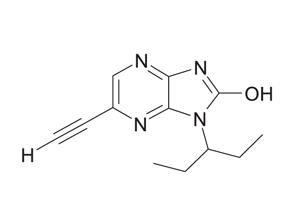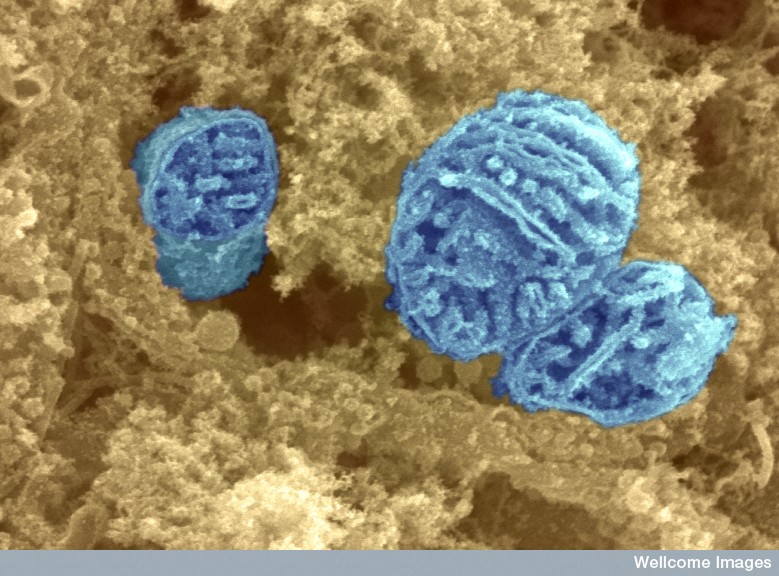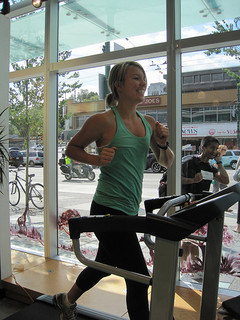The discovery and development of ALS medicines is picking up steam. In 2012 alone, at least 15 emerging treatments are being put to the test in the clinic – including 7 at the phase II and phase III stage.
Stem-cell based strategies including Neuralstem and Brainstorm hope to protect the motor nerves from further destruction. Mitochondrial-targeted medicines including Biogen-Idec’s dexpramipexole hope to treat ALS by keeping the energy flowing in the motor nerves. Immune system modulating drugs including Novartis’ Gilenya and Neuraltus’ NP001 hope to slow ALS in its tracks by reducing neuroinflammation. And, potential muscle boosters including Cytokinetics’ tirasemtiv (CK-357) hope to keep muscles moving.
Experts gathered at the International Symposium on ALS/MND in Chicago this month to discuss emerging treatment strategies currently being tested in the clinic and the challenges evaluating them going forward.
NP001
Neuraltus Pharmaceutical’s NP001 appears to be safe and tolerable according to phase II results presented by California Pacific Medical Center’s Robert Miller MD. Some signs of benefit were detected in ALS patients that took the highest dose (2 mg/kg). These include “modest” hints of reduced progression. 136 people with ALS participated.
“Our primary endpoints were not a home run,” says Miller. “They were a bunt or a base hit. But they were in the right direction.”
A second look at the phase II results, inspired by observations from doctors and trial participants, indicated that the progression appeared to “level off” in a significantly increased subset of people on the highest NP001 dose (27%) compared to placebo (including historical controls) (11%) during the 6 month treatment period. The strategy, called a post-hoc analysis, has been used previously to evaluate certain emerging cancer medicines.
“We feel the results justify the further development of NP001,” says Miller.
A phase III clinical trial is planned. Enrollment is expected to begin sometime in the second half of 2013.
To learn more about NP001 and its potential to treat ALS, tune into our podcast NP001: A quiet riot for ALS? with Robert Miller MD.
NeuRX DPS
Diaphragm pacing might extend survival of some people with ALS according to a new study led by California Pacific Medical Center’s Jonathan Katz MD. The study found that ALS patients implanted with the NeuRX DPS phrenic pacer appeared to live about 16 months (60%) longer vs. historical controls – after the initiation of noninvasive ventilation. 77 people with ALS participated.
“The procedure may work,” says Katz. “But more studies need to be done.”
A key question is whether healthier people with ALS are in some way selected for diaphragm pacer implantation – patients who could live longer otherwise unassisted.
“Until that’s excluded, we need to have a great deal of caution,” says Katz. “We need to study [the DPS] a lot more. We need randomized trials.”
A randomized controlled phase II clinical trial to further evaluate the potential benefits of the NeuRX DPS for people with ALS is now planned. 180 people with ALS are expected to participate. Sites include California and New York. Clinical trials are currently ongoing in England and France.
To learn more about the NeuRX DPS, check out DPS Sleep.
Neuralstem
Neural stem cell transplantation into the spinal cord appears to be safe according to initial phase I clinical trial results presented by Emory University’s Jonathan Glass MD. Stem cells could be detected in the spinal cord of autopsied tissue of some trial participants suggesting that engraftment occurred. No significant changes appeared to be detected in rates of functional decline (including ALS-FRS) according to a recently published phase I analysis. “There is no indication that the treatment accelerated disease progression,” says Glass. 15 people with ALS participated.
A phase II ALS clinical trial is now planned. Neural stem cells at higher doses will be injected into the cervical (diaphragm-moving) region of the spinal cord. The clinical trial is likely to include ALS patients with measurable functional decline and not be placebo-controlled according to Glass. “We are awaiting FDA approval to move forward,” says Glass.
To learn more about stem cell transplantation and ALS, read Neuralstem, surging immunosuppression?
Tirasemtiv

Power up? Tirasemtiv may increase the power generated from fast skeletal muscle according to SUNY Medicine's Jeremy Shefner MD. Courtesy of Nature Publishing Group. All Rights Reserved.
Cytokinetics’ potential muscle booster tirasemtiv (CK-357) appears to be safe and tolerated. But riluzole dosages need to be reduced 50% due to the drug’s ability to block riluzole breakdown according to phase IIa clinical trial results presented by State University of New York Medical University’s Jeremy Shefner MD PhD. “The evidence thus far supports the further evaluation of tirasemtiv,” says Shefner.
A phase IIB 20-week randomized, double-blind placebo-controlled clinical trial is now recruiting. 400 people are expected to participate. Sites include clinics in US and Canada.
To learn more about tirasemtiv, read CK-357, helping pALS live strong?
SOD1-RX
Isis Pharmaceutical’s potential misfolded superoxide dismutase 1 (SOD1)-lowering therapy appears to be safe and tolerable according to initial phase I double-blind placebo-controlled clinical trial results presented by Washington University’s Timothy Miller MD PhD. Patients received at least one dose of SOD1-directed 'gapmer' over a 12 hr period intrathecally - directly into the spinal cord. 21 people with SOD1-linked fALS participated. Key side effects include headaches, backpain and nausea – typical of lumbar puncture. The antisense oligonucleotide is now being redesigned in hopes to optimize its SOD1-lowering abilities. “It is hard to predict when the next trial will be,” says Miller.
To find out about potential SOD1-directed strategies to treat sporadic ALS, check out our watchlist: Antibodies for sALS.
***
Enrollment in clinical trials remains challenging according to Duke University School of Medicine’s Rick Bedlack MD PhD MS. But other key obstacles to push ALS medicines forward also emerged at ALS MND Chicago 2012.
Ceftriaxone
Potential neuroprotective antibiotic ceftriaxone reduced functional decline more than 30% according to phase II double-blind placebo-controlled study results presented by Massachusetts General Hospital’s Merit Cudkowicz MD MSc. The drug was subsequently withdrawn in August of 2012 due to insufficient efficacy at the phase III stage. 513 people with ALS participated.
The results raise key questions about enrollment, the number of people with ALS needed to participate and study duration – particularly to inform and empower phase II go/no go decisions.
Olesoxime

Powerbar? Scientists hope to create mitochondrial-directed ALS medicines to boost energy levels in the deteriorating motor nerves. Image: David Furness PhD, Wellcome Images.
Better clinical trial outcome measures may be needed to evaluate emerging ALS medicines according to olesoxime study investigator and Hôpital de la Pitié-Salpêtrière neurologist Timothée Lenglet MD. The putative mitochondrial protectant failed to significantly extend life of people with ALS according to final randomized double-blind placebo-controlled phase III results presented at ALS MND 2012. 512 people with ALS participated.
“It may be difficult to detect a significant survival advantage in an 18 month clinical trial,” says Lenglet.
Clinical trial outcome measures including survival were a key subject of debate later that evening at Biogen-Idec’s ALS clinical trial roundtable.
“We have not really done well using survival as an endpoint,” says Carolinas Medical Center’s Benjamin Brooks MD.
Montreal Neurological Institute’s Angela Genge MD FRCP agrees. “We need a new endpoint that says that there is an effect and that the effect is worthwhile.”
An emerging technique called joint rank analysis may enable clinicians to do just that according to Genge. The combined functional survival measure is currently being used to help clinicians evaluate Biogen-Idec’s emerging ALS medicine dexpramipexole at the phase III stage. The initial results are anticipated by the end of 2012.
***
In the meantime, clinicians are working hard to care for people with ALS. Soft foods and thickened fluids help people with ALS meet their nutritional needs. Noninvasive ventilation helps ALS patients breathe easier, sleep better and boosts survival. And, certain medicines might help control emotionality and reduce spasticity.
But physicians remain divided on whether to recommend exercise for people with ALS. A growing group of neurologists suspect that workouts can improve the quality of life and might even help fight the disease. But others remain skeptical according to new results presented at ALS/MND 2012.

Exercise does a body good? Researchers at the University of Lisbon are developing treadmilling-based exercise regimens for people with ALS. Image: LuluLemon Athletica, Flickr.
Aerobic and Resistance Exercise
Certain forms of exercise including swimming might be safe for people with ALS according to a retrospective analysis of 234 patients’ hospital records led by the Hospice of Special Care’s Jinsy Andrews MD. No significant decline in survival was detected in people with ALS who exercised. What’s more, patients that exercised tended to experience slower functional and respiratory decline.
But key obstacles remain. Nearly 1 out of 4 health professionals are reluctant to routinely recommend exercise to people with ALS due to concerns of fatigue, falls and increased muscle weakness according to a survey from University of Pennsylvania’s Michele Lewis DPT. And, workouts must be tailored to each ALS patient according to Northwestern Memorial Hospital’s Margaret McGovern-Denk MS OTR/L - making the design of general clinical practice guidelines challenging.
A big part of the problem is that there is insufficient evidence to indicate which exercises are the best choice for people with ALS. A clinical trial of certain forms of exercise including stationary cycling and weightlifting led by Johns Hopkins University School of Medicine neurologist Nicholas Maragakis MD is ongoing. 60 people with ALS are expected to participate.
To learn more about exercise and ALS MND, check out Stretching the Limits of ALS Care.